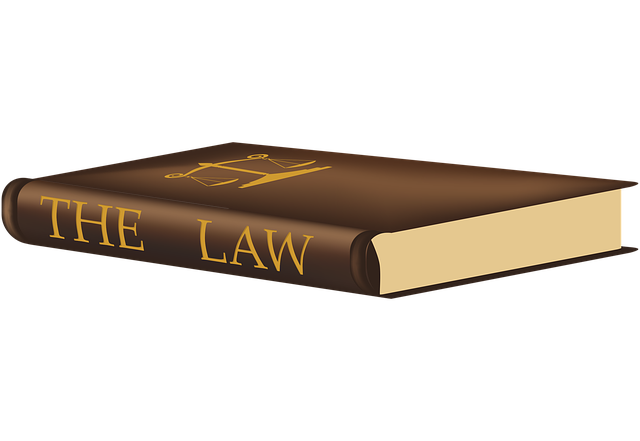Proving damages in defamation cases under consumer protection laws is vital for businesses and consumers alike. It involves demonstrating financial and reputational losses due to false statements, with skilled legal professionals navigating complex regulations. Evidence collection, including documents and testimonies, is crucial, while understanding actual vs. punitive damages ensures appropriate compensation for harm and deterrence of malicious conduct. This stringent process leads to tangible outcomes, promoting ethical business practices and protecting consumer rights.
Consumer protection suits play a vital role in safeguarding individuals from unfair business practices and misinformation. This article delves into the intricacies of navigating these legal battles, focusing on proving damages in defamation cases. We explore key elements, from understanding consumer protection laws to gathering evidence and measuring actual vs. punitive damages. Learn how to prove liability and demonstrate impact effectively in court, ensuring justice for harmed consumers.
- Understanding Consumer Protection Laws
- Elements of Defamation Claims
- Gathering Evidence for Damages
- Measuring Actual vs. Punitive Damages
- Proving Liability and Impact in Court
Understanding Consumer Protection Laws

Understanding Consumer Protection Laws is paramount for both businesses and consumers alike. These regulations are designed to safeguard individuals from unfair practices and misleading information in their daily transactions. The overarching goal is to foster trust and transparency between buyers and sellers, ensuring that products and services meet advertised standards. Consumer protection laws cover a wide range of issues, including false advertising, product liability, and data privacy. Proving damages in defamation cases, a key aspect of these laws, requires solid evidence linking the defendant’s actions to concrete harm suffered by the plaintiff.
Businesses must be particularly mindful of their obligations under consumer protection regulations, as violations can lead to significant legal consequences. While general criminal defense strategies may offer some protection, white-collar defense tactics are often more tailored to address the unique challenges posed by consumer protection lawsuits. Each respective business should have robust internal policies and procedures in place to minimize risks and ensure compliance with these laws. This proactive approach not only helps protect consumers but also fosters a positive brand image and builds trust among customers.
Elements of Defamation Claims

In consumer protection suits, one of the key elements when pursuing a defamation claim is proving damages. This involves demonstrating that the false statements or representations made by the defendant have caused tangible harm to the plaintiff’s reputation or business. In high-stakes cases, where substantial financial losses are at stake, it’s crucial to present robust evidence linking the defamation to the subsequent decline in sales, loss of customers, or any other measurable detrimental impact.
The process of establishing damages can be complex but is essential for securing a successful outcome. Legal professionals skilled in these matters understand how to navigate the nuances of defamation law and leverage relevant case precedents. Their goal is often to secure not just compensation for economic losses, but also a complete dismissal of all charges, thereby restoring the plaintiff’s reputation and preventing further reputational harm.
Gathering Evidence for Damages

Gathering evidence to prove damages in consumer protection suits, particularly in defamation cases, is a meticulous process. It involves sifting through various documents, records, and testimonies that demonstrate the financial and reputational losses incurred by the plaintiff. This may include bank statements, sales records, and expert opinions on market trends, all aimed at quantifying the harm caused.
In these cases, it’s crucial to engage with both the philanthropic and political communities for support. An unprecedented track record of successful settlements or verdicts in similar cases can bolster the claim and potentially expedite the process. While jury trials remain a common route, alternative dispute resolution methods are also gaining traction, offering flexible and cost-effective avenues for proving damages and seeking justice.
Measuring Actual vs. Punitive Damages

In consumer protection suits, distinguishing between actual and punitive damages is paramount. Actual damages refer to the tangible losses suffered by consumers as a result of fraudulent or misleading business practices. These can include out-of-pocket expenses such as the cost of faulty products or services. Proving actual damages in defamation cases requires concrete evidence and documentation of financial losses incurred due to false accusations or statements made by the defendant. An unprecedented track record of achieving extraordinary results for his clients underscores the importance of meticulous proof in these matters.
Punitive damages, on the other hand, are intended to penalize defendants for their malicious or willful conduct, deterring them and similar businesses from engaging in such practices in the future. While both types of damages aim to hold businesses accountable, they serve different purposes. The former compensates victims for their losses, while the latter seeks to punish and reform wrongdoers. An experienced legal team with an outstanding track record in consumer protection cases can help navigate this nuanced distinction, ensuring that clients receive appropriate compensation for actual harm while holding defendants accountable through punitive damages when warranted.
Proving Liability and Impact in Court

Proving liability in consumer protection suits is a meticulous process that requires solid evidence and a comprehensive understanding of the law. When filing a case, plaintiffs must demonstrate that a business engaged in unlawful practices, such as false advertising or unfair pricing, causing tangible harm to consumers. This involves presenting compelling evidence like deceptive marketing materials, financial records, and expert testimony to illustrate the extent of the damage.
The impact of these suits extends beyond financial compensation. Jury trials in consumer protection cases often lead to significant changes in corporate behaviour, deterring future violations of consumer rights. By holding businesses accountable for white-collar and economic crimes, these legal battles protect consumers from exploitative practices and promote ethical business conduct in their respective industries.
Consumer protection suits are complex legal battles that require a deep understanding of relevant laws, robust evidence gathering, and precise measurement of damages. By examining the elements of defamation claims, gathering concrete proof for compensation, and demonstrating liability’s impact, individuals can navigate these cases effectively. When it comes to proving damages in defamation cases, a thorough approach ensures justice is served, restoring the rights of consumers and holding businesses accountable for their actions.






